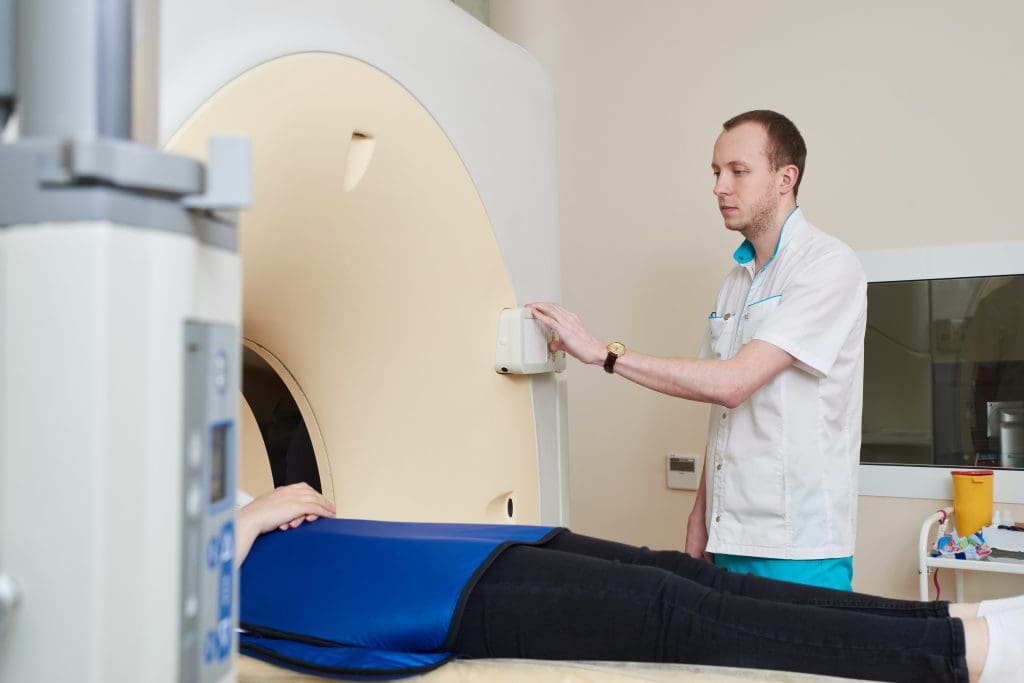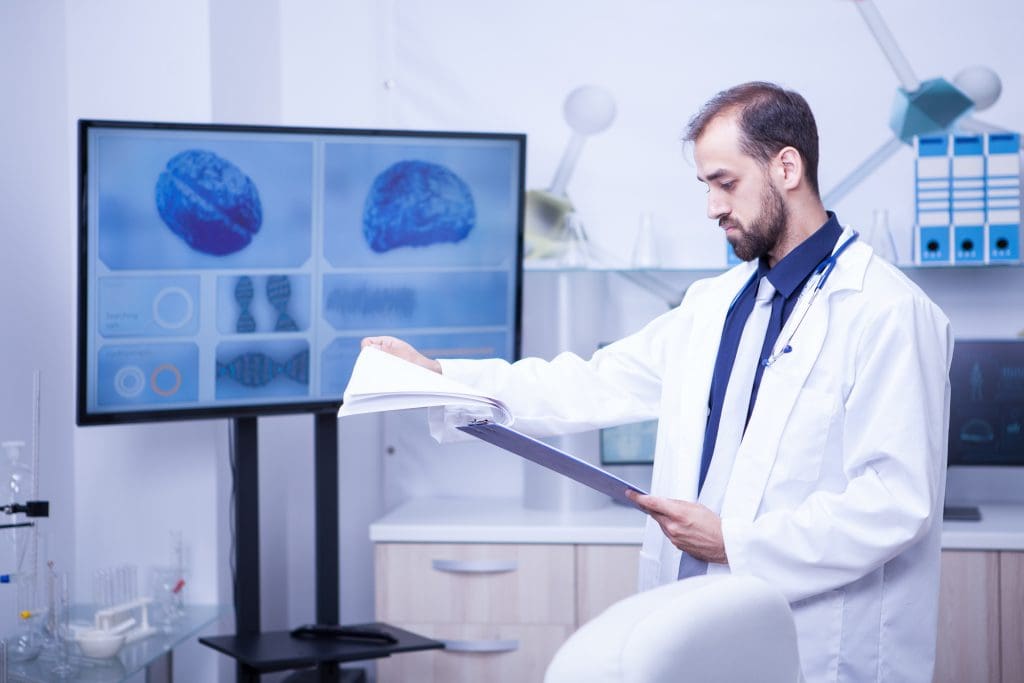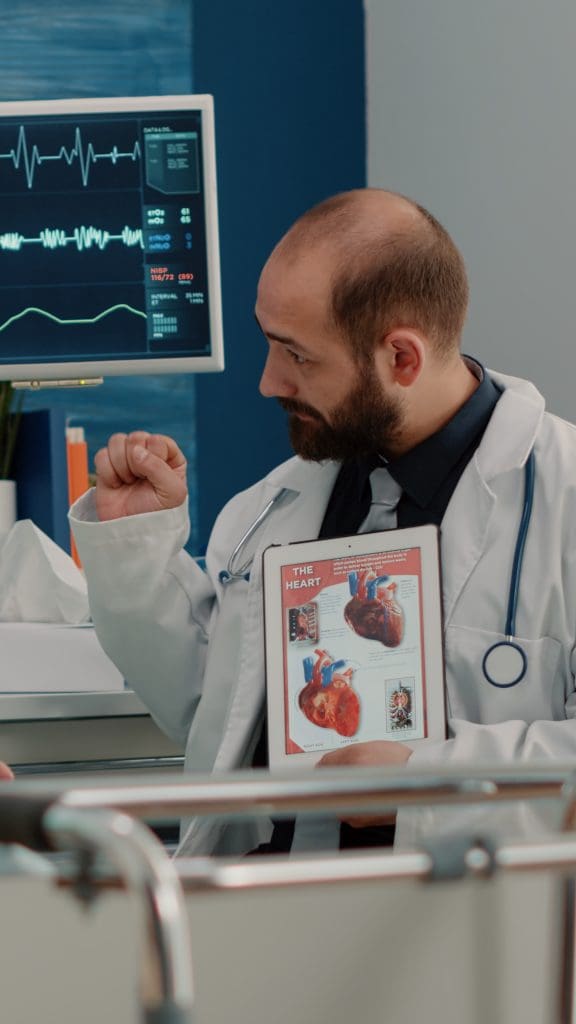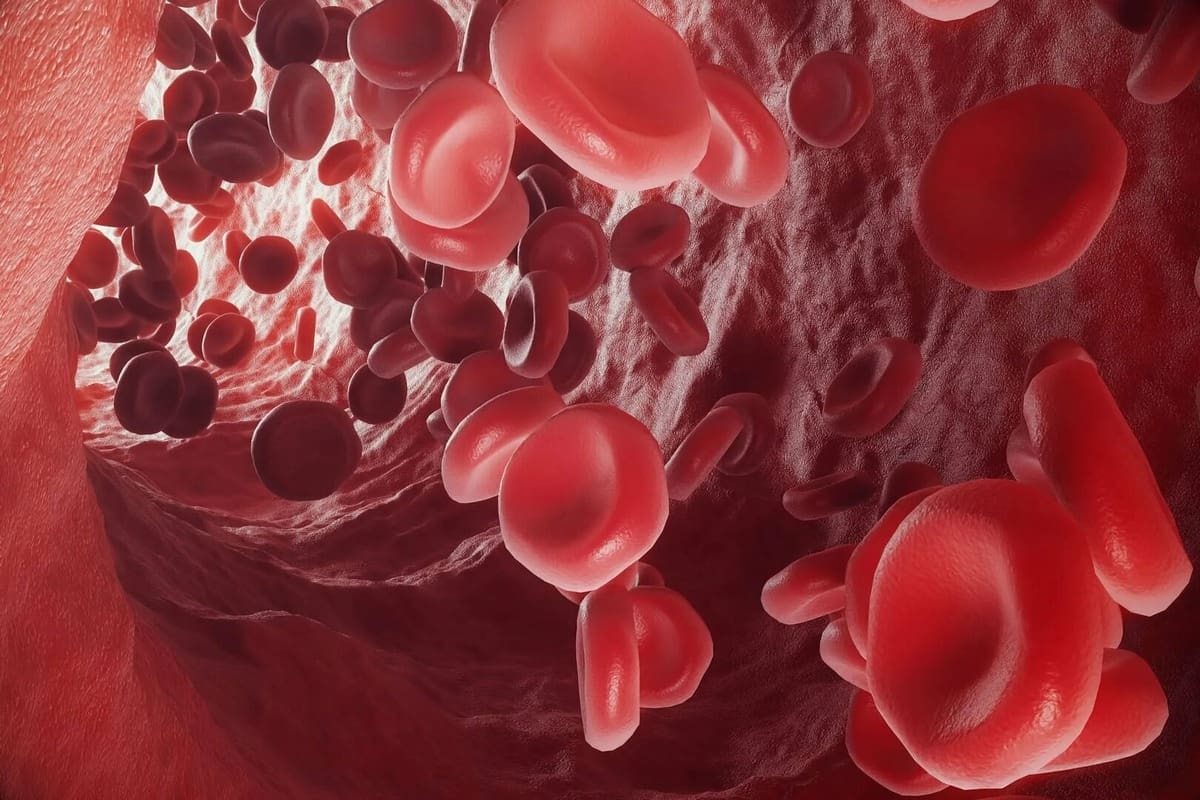Last Updated on November 27, 2025 by Bilal Hasdemir
A PET scan is a key tool for doctors to find and treat many health issues. Did you know over 2 million PET scans happen every year in the United States? This shows how important PET scans are in today’s medicine.
Knowing about PET scan preparation and the process can make you feel less nervous. In this article, we’ll explore PET scans more. We’ll talk about how long they take and what you need to do before.
Key Takeaways
- PET scans are a vital diagnostic tool in modern medicine.
- The entire PET scan process takes around 2-3 hours.
- Preparation is key to a successful PET scan.
- PET scan costs vary across different cities and hospitals.
- Understanding the PET scan procedure can help alleviate anxiety.
Understanding PET Scans: An Overview

A PET scan is a cutting-edge medical imaging method. It gives deep insights into the body’s inner workings. Positron Emission Tomography (PET) is a tool that helps doctors spot and track different health issues. This includes cancer, brain disorders, and heart diseases.
What is a PET Scan?
A PET scan is a non-invasive test that uses a radioactive tracer. It shows how the body’s tissues and organs work. The PET scan definition is about its ability to show detailed images of the body’s inside.
How Positron Emission Tomography Works
The Positron Emission Tomography process starts with a small radioactive tracer injection. This tracer goes to areas with lots of activity, like growing cancer cells. The PET scanner picks up the signals from the tracer, making clear images of the body’s inside.
Common Uses and Applications
PET scans are used in many ways in medicine. They help find and track cancer, see how far it has spread, and check if treatments are working. They also help with neurological applications like Alzheimer’s and epilepsy. Plus, they’re key in cardiac assessment to check the heart’s function and find problems.
Knowing how PET scans work and their uses helps patients see their value in today’s medicine.
The Purpose of PET Scans in Medical Diagnostics
PET scans are key in modern medicine. They give insights into how our bodies work. They are vital for diagnosing and managing many health issues.
Cancer Detection and Staging

PET scans are a big help in fighting cancer. They help find out how far cancer has spread. This is key for choosing the right treatment.
They can spot cancer cells early, even when they’re small. This is important because it helps doctors act fast.
- Identifying primary and metastatic tumors
- Assessing the effectiveness of ongoing cancer treatment
- Monitoring for cancer recurrence
Neurological Applications

In brain health, PET scans are very useful. They help diagnose and track diseases like Alzheimer’s and Parkinson’s. They also help with epilepsy.
- Evaluating brain function in neurodegenerative diseases
- Assessing seizure activity in epilepsy
Cardiac Assessment

PET scans are also used for heart health. They check how well the heart works and if it’s healthy. This is great for people with heart disease.
- Evaluating myocardial viability
- Assessing coronary artery disease
Why Doctors Order PET Scans
Doctors use PET scans for many reasons. They give both functional and anatomical info. This helps doctors make accurate diagnoses and treatment plans.
Key reasons include:
- Accurate diagnosis and staging of diseases
- Monitoring treatment response
- Guiding surgical and radiation therapy interventions
Understanding PET scans helps patients see their importance in healthcare.
PET Scan vs. Other Imaging Techniques
Understanding the differences between PET scans and other imaging techniques is key for accurate diagnosis. Medical imaging is vital for diagnosing and managing health conditions. PET scans, CT scans, and MRI are among the most used modalities.
PET Scan vs. CT Scan
PET scans and CT scans are both important tools, but they have different uses. A CT scan gives detailed anatomical information by using X-rays. On the other hand, a PET scan looks at metabolic activity in the body, using a radioactive tracer.
This makes PET scans great for finding cancer, checking how treatments work, and looking at certain neurological conditions. While CT scans are good at showing body details, PET scans show how body tissues and organs work. Using both PET and CT scans together (PET/CT) gives a better understanding of a patient’s health.
PET Scan vs. MRI
MRI (Magnetic Resonance Imaging) creates detailed images of the body’s internal structures without ionizing radiation. It’s excellent for soft tissue imaging, which is key for diagnosing brain, spinal cord, and musculoskeletal system conditions.
The main difference between PET scans and MRI is their focus. MRI shows detailed anatomy, while PET scans show metabolic activity. For some conditions, like neurological disorders or cardiac viability, using PET with MRI (PET/MRI) can be helpful, though it’s less common than PET/CT.
Benefits of Combined PET/CT Scans
Combined PET/CT scans are widely used, mainly in oncology. They combine PET’s metabolic information with CT’s anatomical detail. This helps doctors diagnose and stage cancers more accurately and monitor treatment effectiveness.
The advantages of PET/CT scans include better diagnosis, disease staging, and treatment planning. This hybrid approach offers a more complete view of a patient’s condition, leading to more targeted and effective care.
When Each Type of Scan is Most Appropriate
The choice between PET scans, CT scans, and MRI depends on the clinical question. PET scans are often chosen for assessing metabolic activity, like in cancer diagnosis and staging, or for certain neurological conditions.
CT scans are used when detailed anatomical information is needed, such as in emergencies or for biopsies. MRI is best for soft tissue imaging and is often used for brain, spine, and musculoskeletal system conditions.
The decision on which imaging modality to use is made on a case-by-case basis. It considers the patient’s specific needs and the condition being investigated.
How Long Does a PET Scan Take: Complete Timeline
Knowing how long a PET scan takes is important for patients. It usually takes about 2-3 hours. This includes all the steps from start to finish.
Pre-Scan Procedures (30-60 Minutes)
Before the PET scan, patients go through several steps. These include:
- Registration and preparation (15-30 minutes)
- Changing into a hospital gown (5-10 minutes)
- Insertion of an IV line for tracer injection (5-10 minutes)
These steps are key to making sure the scan is safe and works well.
Tracer Injection and Uptake Period (60-90 Minutes)
Next, patients get an injection of a radioactive tracer. This tracer needs 60-90 minutes to spread through the body. During this time, patients need to stay calm and quiet.
This period is important for the tracer to reach the right places in the body.
Actual Scanning Time (20-45 Minutes)
The actual scan time is between 20-45 minutes. Patients lie on a table that moves into the scanner. They must stay very quiet and not move.
The exact time can change based on the scan type and what’s being looked at.
Post-Scan Monitoring (15-30 Minutes)
After the scan, patients are watched for a bit. This is to make sure they’re okay and there are no bad reactions to the tracer.
- They’re told to drink lots of water to get rid of the tracer.
- Some might feel a bit dizzy or sick, but these feelings usually go away fast.
In summary, even though a PET scan takes 2-3 hours, the actual scanning part is quite short. Knowing the whole process can help patients feel more ready and less worried.
Preparing for Your PET Scan: Essential Steps
Getting ready for a PET scan is important. It involves scheduling and making dietary changes. These steps help ensure the scan’s accuracy and usefulness for diagnosis and treatment.
Scheduling Your Appointment
Start by scheduling your PET scan. Choose a time that works for you and the facility. Make sure you have all the details and instructions from your doctor or the imaging center.
- Confirm the date, time, and location of your PET scan.
- Ask about any specific preparation instructions.
- Inform them about any medications you’re taking or any health conditions you have.
Dietary Restrictions Before the Scan
Following a specific diet is key for PET scan prep. It helps the tracer absorb correctly in your body.
Important dietary tips include:
- Avoid foods and drinks that could affect the tracer.
- Follow any diet instructions from your healthcare provider or the imaging center.
Fasting Requirements and Why They Matter
Fasting is a big part of PET scan prep. You’ll need to fast for 4-6 hours before the scan. This ensures the tracer is distributed right across your body.
Fasting is important because it:
- Lowers blood sugar, which helps the tracer work better.
- Helps the tracer get absorbed by tissues instead of being broken down fast.
It’s vital to stick to fasting instructions to avoid rescheduling.
Hydration Guidelines
Drinking water is also key for PET scan prep. Drinking plenty of water before and after helps in:
- Getting rid of the tracer from your body after the scan.
- Lowering the chance of side effects.
But, always follow the hydration advice from your healthcare provider or the imaging center. They might have special guidelines for you or the type of PET scan you’re having.
Medications to Avoid Before a PET Scan
To get accurate results from a PET scan, you should avoid certain medications before it. The medications you take can affect the scan’s outcome. It’s important to know which ones might mess with the results.
Glucose-Altering Medications
Glucose-altering medications are a big concern. This includes insulin and oral diabetes meds that change blood sugar levels. PET scans use a glucose tracer to see metabolic activity. Taking these meds can change where the tracer goes, leading to wrong results.
For example, insulin makes cells take up more glucose and the tracer. This can make the images misleading. It’s best to adjust or stop these meds before the scan, but only with a doctor’s advice.
Over-the-Counter Medications to Avoid
Some over-the-counter (OTC) medications and supplements can also affect PET scan results. Some herbal supplements can change metabolic rates or interact with the tracer.
Tell your doctor about all OTC meds and supplements you’re taking. They’ll tell you if you should keep taking them before the scan or stop them for a while.
When to Consult Your Doctor About Medications
If you’re on any meds, talk to your doctor before your PET scan. They’ll tell you which meds to avoid and how to manage your meds before the scan.
This is also a chance to talk about any worries you have about your meds and the scan. Your doctor can give you advice based on your health and meds.
Special Considerations for Diabetic Patients
For diabetics, managing meds before a PET scan is tricky. It’s key to work with your doctor to adjust your meds as needed. This might mean changing when you take your insulin or diabetes meds to keep your blood sugar stable during the scan.
Diabetics should also know how their condition can affect the scan. By keeping an eye on your blood sugar and adjusting your meds, you can help make sure the scan is accurate and helpful.
Physical Preparation for a PET Scan
Getting ready physically for a PET scan is key for good results. A PET scan is a tool doctors use to find health issues like cancer and heart disease. It’s important to prepare well.
There are a few things to do before the scan. You need to know what activities to avoid, if you can shower, and the importance of rest.
Activity Limitations Before the Scan
It’s best to avoid hard activities before a PET scan. This is because hard work can mess with the scan’s results. It’s important to keep the scan accurate.
Some activities to limit or avoid include:
- Strenuous exercise
- Heavy lifting
- High-intensity workouts
By avoiding these, you help make sure your scan is as accurate as it can be.
Can You Shower Before a PET Scan?
Yes, you can usually shower before a PET scan. But, always follow the rules given by your doctor or the PET scan place.
Some things to keep in mind:
- Avoid applying lotions, creams, or deodorants after showering, as these can interfere with the scan.
- Wear comfortable, loose-fitting clothing to the scan.
Why Rest is Important Before the Procedure
Resting before a PET scan is very important. It helps your body relax and can make the scan images better.
“Rest is a critical component of preparing for a PET scan. It allows your body to be in a relaxed state, which can help improve the accuracy of the scan results.”
Try to feel relaxed and calm when you arrive at the scan place. Avoid doing anything too exciting or drinking caffeinated drinks before the scan.
Preparing Mentally for the Scan
Getting ready mentally is just as important as physically. Knowing what to expect can help you feel less anxious and more comfortable.
Tips for mental preparation include:
- Learning about the PET scan process
- Asking questions to your healthcare provider
- Using relaxation techniques, such as deep breathing or meditation
By preparing both physically and mentally, you can have a better PET scan experience. This helps make sure your results are accurate and reliable.
The Day of Your PET Scan: What to Expect
Here’s what you can expect on the day of your PET scan. Knowing the steps can make the experience smoother.
Arrival and Check-in Process
When you arrive, you’ll check in at the reception desk. Have your ID and medical records ready. The process is quick and easy.
Tracer Injection Procedure
A medical professional will give you the tracer injection after check-in. This involves a small amount of radioactive material in your arm. The tracer injection is key for the PET scan to work.
The Waiting Period: What Happens and Why
After the injection, you’ll wait for 30 to 90 minutes. This lets the tracer spread through your body. It’s important to stay calm and relaxed.
The Scanning Procedure Step by Step
After waiting, you’ll go to the PET scanning room. You’ll lie on a table that slides into the scanner. The technologist will help you get into position and leave before starting.
The scan takes 20 to 45 minutes. Try to stay as quiet as possible. The technologist will watch you from another room and can talk to you through an intercom. If you’re uncomfortable, let them know.
Inside the PET Scan Machine: The Patient Experience
For many patients, the PET scan machine is a big step in their health journey. Knowing what to expect can help reduce anxiety and make the process easier.
Description of the PET Scanner
The PET scan machine is a big, round device. It’s made to take detailed pictures of how the body works. It often works with a CT scanner to show both how things work and their shape.
Key Features of a PET Scanner:
- A large, doughnut-shaped gantry that houses the scanning technology
- A movable table that slides into the gantry
- Advanced computer systems for image reconstruction and analysis
What You’ll See, Hear, and Feel
When you go into the PET scan room, you’ll see the big PET scanner and the technologist at the control console. You might hear soft humming or whirring as the machine works.
It’s normal to feel a bit nervous, but the technologists are trained to make sure you’re comfortable and safe.
Managing Claustrophobia and Anxiety
For those with claustrophobia or anxiety, the PET scan machine can be tough. But, there are ways to handle these feelings:
- Communication: Tell the technologist about your claustrophobia or anxiety before the scan.
- Relaxation Techniques: Try deep breathing or meditation before and during the scan.
- Open-Bore Scanners: Some places have open-bore PET scanners that give more room.
Communication with Technologists During the Scan
Talking to the technologists during the PET scan is key. They can give you reassurance and instructions.
Before the scan starts, talk to the technologist about any worries or questions you have. They can tell you what to expect and how to stay comfortable.
After Your PET Scan: Important Information
The time after a PET scan is key for patient care and safety. After the scan, patients are watched closely. This is to make sure there are no bad reactions to the tracer used.
Immediate Post-Scan Guidelines
After your PET scan, you’ll get specific rules to follow. You might need to drink lots of water to get rid of the tracer. Also, you should:
- Urge frequently to help eliminate the tracer
- Avoid close contact with pregnant women and young children for a few hours
- Resume your normal diet unless instructed differently
Radiation Safety Precautions
Even though PET scans use safe amounts of radiation, it’s good to take precautions. Radiation safety precautions are very important for pregnant women, kids, and people who will be near you.
How Long Are You Radioactive After a PET Scan?
The tracer in PET scans is usually gone from your body in a few hours. The radioactive decay happens fast, with most of it coming out through urine and feces. Usually, you’re not radioactive after 24 hours.
When You Can Resume Normal Activities
Most people can go back to their usual activities soon after a PET scan. But, it’s important to listen to your doctor’s advice. Some activities might need to wait a bit.
Knowing what to expect after a PET scan helps patients. It makes their journey through diagnosis safer for them and those around them.
Getting Your PET Scan Results
Understanding your PET scan results is key in your health journey. After the scan, you’ll get and interpret the results. This can greatly affect your treatment and health.
Typical Timeframe for Results
The time to get PET scan results varies. It can be a few hours to several days. This depends on the scan’s complexity and the facility’s workload.
Some places give you early results right after. But a full report might take longer.
How PET Scan Images Are Interpreted
Skilled radiologists look at PET scan images. They check for metabolic activity. This can show conditions like cancer or heart issues.
They compare the scan data with other tests. This helps give a full picture of your health.
Understanding Your Results Report
Your report will detail the findings and suggest next steps. It’s vital to talk about it with your doctor. This way, you’ll understand what it means for you.
Follow-up Appointments and Next Steps
After getting your results, your doctor will set up a follow-up. This is your chance to ask questions and get a treatment plan. Write down your questions to make the most of this time.
Getting your PET scan results is a big moment. Being informed and proactive helps you make the best health choices.
Potential Side Effects and Risks of PET Scans
It’s important to know about the side effects and risks of PET scans. These scans use a radioactive tracer. This can cause some side effects.
Common Side Effects from the Tracer
The tracer in PET scans is usually safe. But, some people might feel side effects. These can include:
- Headache
- Dizziness
- Nausea
- Allergic reactions to the tracer
These effects are usually mild and go away quickly after the scan.
Radiation Exposure Considerations
PET scans expose you to a small amount of radiation. The dose is low, but it’s important to think about the risks. This is true for children and pregnant women.
Radiation exposure considerations include:
- Risk of radiation-induced cancer
- Effects on the fetus during pregnancy
- Impact on children due to their developing tissues
Allergic Reactions: Signs to Watch For
Some people might be allergic to the PET scan tracer. Look out for signs like:
- Rash or itching
- Swelling
- Difficulty breathing
If you see these signs, tell the medical staff right away.
Who Should Avoid PET Scans
While PET scans are safe for most, some should avoid them. This includes:
- Pregnant or breastfeeding women
- Children, due to the long-term effects of radiation
- Patients with certain medical conditions, such as diabetes or kidney disease
Talk to your doctor about any concerns or medical conditions before a PET scan.
In summary, PET scans are useful but come with side effects and risks. Knowing about these helps patients make better choices for their health.
Conclusion
Knowing about the PET scan procedure and how to prepare is key for patients. A PET scan is a powerful tool in medical tests. It’s used a lot for finding cancer, studying the brain, and checking the heart.
The PET scan process has several steps. First, you prepare by following certain rules. Then, you get a special dye injected into your body. After that, you go through the actual scan.
Understanding what happens during a PET scan helps patients feel less nervous. It makes the experience smoother. The scan’s results help doctors find and treat diseases better.
To wrap it up, a PET scan is a critical tool for doctors. It gives them important information about the body. By knowing about the PET scan, patients can help their own health. This leads to better care and results.
FAQ
What is a PET scan?
A PET (Positron Emission Tomography) scan is a test that uses a special tracer. It shows how the body’s cells work. This helps doctors find and track diseases like cancer, brain disorders, and heart problems.
How long does a PET scan take?
A PET scan takes about 2-3 hours. This includes getting ready, getting the tracer, waiting, and scanning. The actual scan time is 20-45 minutes.
What preparation is required for a PET scan?
Before a PET scan, you might need to stop eating, avoid certain medicines, and drink lots of water. Your doctor or the imaging center will tell you what to do.
What are the common uses of PET scans?
PET scans help find and check cancer, diagnose brain diseases like Alzheimer’s, and look at the heart’s function.
What is a PET scan?
A PET (Positron Emission Tomography) scan is a test that uses a special tracer. It shows how the body’s cells work. This helps doctors find and track diseases like cancer, brain disorders, and heart problems.
How long does a PET scan take?
A PET scan takes about 2-3 hours. This includes getting ready, getting the tracer, waiting, and scanning. The actual scan time is 20-45 minutes.
What preparation is required for a PET scan?
Before a PET scan, you might need to stop eating, avoid certain medicines, and drink lots of water. Your doctor or the imaging center will tell you what to do.
What are the common uses of PET scans?
PET scans help find and check cancer, diagnose brain diseases like Alzheimer’s, and look at the heart’s function.
How does a PET scan differ from a CT scan or MRI?
PET scans show how cells work. CT scans give detailed pictures of the body’s structure. MRI uses magnetic fields to see inside. PET/CT scans mix both, giving a full view.
What are the benefits of combined PET/CT scans?
PET/CT scans give detailed pictures and show how cells work. This helps doctors make better diagnoses and treatment plans.
Are there any side effects or risks associated with PET scans?
Most side effects are mild, like a little discomfort from the injection. There’s some radiation risk and rare allergic reactions.
How long are you radioactive after a PET scan?
The tracer leaves your body in a few hours. You can usually go back to normal activities soon after.
Can you shower before a PET scan?
It’s okay to shower on the day of the scan, but avoid using lotions or deodorants. Your imaging center will give you specific instructions.
How long does it take to get PET scan results?
Results from a PET scan usually come in a few days to a week.
What should you do after a PET scan?
Drink lots of water after a PET scan. Avoid being close to pregnant women and kids for a few hours. Follow any instructions from your doctor or imaging center.
Can PET scans be used for all types of cancer?
PET scans help with many cancers, but not all. They’re best for detecting and staging certain cancers.
How do you manage claustrophobia during a PET scan?
If you’re scared of tight spaces, there are open PET scanners or sedation. Talk to your doctor or imaging center about your fears before the scan.
What is the difference between a PET scan and a PET/CT scan?
A PET scan shows how cells work. A PET/CT scan adds detailed body pictures from the CT scan. This gives a complete view.
What is a PET scan?
A PET (Positron Emission Tomography) scan is a test that uses a special tracer. It shows how the body’s cells work. This helps doctors find and track diseases like cancer, brain disorders, and heart problems.
How long does a PET scan take?
A PET scan takes about 2-3 hours. This includes getting ready, getting the tracer, waiting, and scanning. The actual scan time is 20-45 minutes.
What preparation is required for a PET scan?
Before a PET scan, you might need to stop eating, avoid certain medicines, and drink lots of water. Your doctor or the imaging center will tell you what to do.
What are the common uses of PET scans?
PET scans help find and check cancer, diagnose brain diseases like Alzheimer’s, and look at the heart’s function.
How does a PET scan differ from a CT scan or MRI?
PET scans show how cells work. CT scans give detailed pictures of the body’s structure. MRI uses magnetic fields to see inside. PET/CT scans mix both, giving a full view.
What are the benefits of combined PET/CT scans?
PET/CT scans give detailed pictures and show how cells work. This helps doctors make better diagnoses and treatment plans.
Are there any side effects or risks associated with PET scans?
Most side effects are mild, like a little discomfort from the injection. There’s some radiation risk and rare allergic reactions.
How long are you radioactive after a PET scan?
The tracer leaves your body in a few hours. You can usually go back to normal activities soon after.
Can you shower before a PET scan?
It’s okay to shower on the day of the scan, but avoid using lotions or deodorants. Your imaging center will give you specific instructions.
How long does it take to get PET scan results?
Results from a PET scan usually come in a few days to a week.
What should you do after a PET scan?
Drink lots of water after a PET scan. Avoid being close to pregnant women and kids for a few hours. Follow any instructions from your doctor or imaging center.
Can PET scans be used for all types of cancer?
PET scans help with many cancers, but not all. They’re best for detecting and staging certain cancers.
How do you manage claustrophobia during a PET scan?
If you’re scared of tight spaces, there are open PET scanners or sedation. Talk to your doctor or imaging center about your fears before the scan.
What is the difference between a PET scan and a PET/CT scan?
A PET scan shows how cells work. A PET/CT scan adds detailed body pictures from the CT scan. This gives a complete view.






